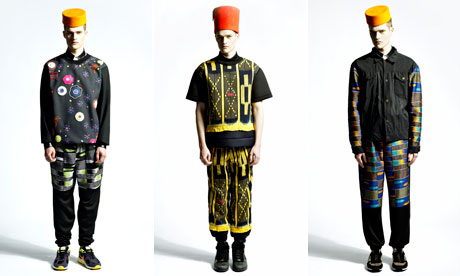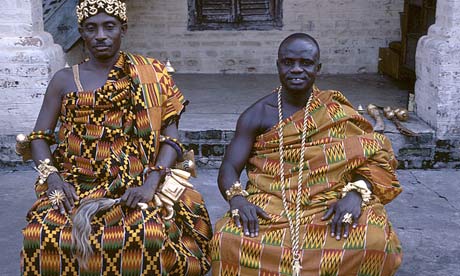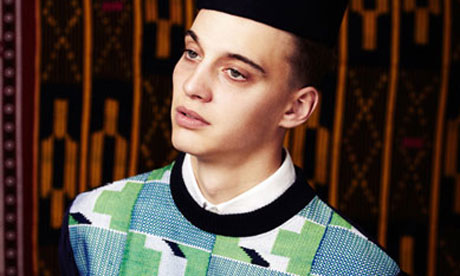Title: Danish designer finds inspiration in Ashanti Empire
-

Some of the latest menswear by Trine Lindegaard.
Animal print is another story. I use animal print all the time, as does Michael Kors; an instance of appropriation. There is no problem with appropriation, it's another word for inspiration; do we need the leopard's permission to use its spots?
The dialogue then becomes something along the lines of, how we appropriate a culture with due regard. Everyone knows what tartan is, but do they know its history? Is it essential they do? At the very least we all know that tartan is Scottish. We're not just going on about "how inspired we were by Europe this season".

Ashanti paramount chief Nana Akyanfuo Akowuah Dateh II with regional chief, Kwaku Addai on right. Photograph: Eliot Elisofon, 1970/Courtesy of the Eliot Elisofon Photographic Archives, National Museum of African Art, Smithsonian
The majority of African fabrics, like Akan cloths, are an expression of nationality or ritual, or associated with essences like mother earth or maturation, with certain colours reserved exclusively for special occasions, procession or one's status within their respective culture.
Known for her ongoing romance with textile developments both fragile and tenacious, think hand-dipped silks or hi-tech sporting materials, Trine Linedegaard, a Danish designer living in London, is peeling back the layers with her third collection for her self-titled line, which just so happens to be rooted in west African fabrics.
Actually, they don't just happen to be rooted there. Which is the beautiful point.

One of Trine Lindegaard's designs.
The Akan men, who traded with Timbuktu during the height of west African glory in the middle ages, wearing headpieces and wraparound dresses made of the fabric, rose to power during a 13th century gold boom, ultimately leading to the well known Akan empire of Ashanti (1701-1957). Today the Ashanti monarchy continues as a constitutionally protected traditional state within contemporary Ghana, their current king, the 16th Ashanti king, Otumfuo Nana Osei Tutu II, who was crowned in 1999, still reserves wearing his Akan Kente cloth for special occasions and ceremonial procession. Perhaps it's time he wore it with shorts and sneakers and a tangerine pill box hat, like Lindegaard wants us to.
Trine Lindegaard's Spring/Summer 14 collection will be on show at the London Collections 16 - 18 June 16, MEN showrooms
Source/Credit: http://www.guardian.co.uk/world/gallery/2013/may/20/trine-lindegaard-fashion-gallery
For more info about Trine Lindegaard visit: http://www.trinelindegaard.com/ https://www.facebook.com/TrineLindegaard1
http://www.londoncollections.co.uk/men/designers_profile.aspx?DesignerID=2236
Wonderful cloth here. these cloth as like as African Fabrics
ReplyDeleteAfrican Wax Print
African George Fabric
African Velvet George
Guipure Lace Fabrics
Nigerian Lace Fabric
French Lace Fabric
African Head Tie
beautiful collection all are bright and gorgeous. please visit us for more african dress and fashion AFRICAN PRINTS, WHOLE SELL AFRICAN PRINTS
ReplyDelete